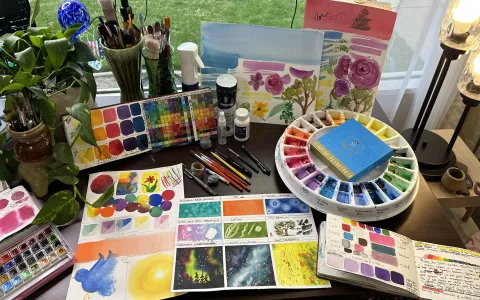Man, I gotta tell you, the last six months have been rough. I’m usually a pretty solid sleeper, eight hours minimum, wake up ready to crush the day. But lately? It was pure anxiety fuel, all thanks to these absolutely ridiculous dreams about people breaking into my house. Not just vague shadows, either. We’re talking full-on scenarios: hearing the latch click, seeing a silhouette in the hall, feeling that panic surge.
I woke up exhausted, drenched in sweat, heart hammering. I’d spend the first two hours of my workday checking all the locks, even though I knew I had checked them three times before I got into bed. It started messing up everything. I almost flooded the laundry room because I was so distracted checking the front door lock for the fifth time that I forgot the washer was running. Something had to give. I couldn’t keep living half-awake and constantly paranoid.
I Started By Fixing the Gaps I Knew Existed
My first attempt was garbage. I tried sleeping pills. They just knocked me out cold, and then I woke up feeling groggy, but the anxiety was still waiting for me. I realized I wasn’t dealing with the root issue—the feeling of absolute powerlessness—I was just trying to wallpaper over it.
So, I scrapped the pills and decided I needed a concrete plan. I grabbed a notebook and I started listing every stupid thought that popped into my head when I woke up screaming. I finally cracked the code and hammered out five simple, actionable steps. These weren’t therapy ideas; these were just things I decided to physically do to regain control.
Step 1: The Physical Security Overhaul (The Audit)
First thing I did, I stopped trusting my memory. I instituted a physical audit. Every single night, 30 minutes before bed, I walked the entire perimeter of the inside of the house, like a security guard on patrol. This wasn’t just glancing at the doors. This was serious. I called it my “Lockdown Walk.”
- I physically pushed on every ground-floor window to make sure the latches were fully engaged.
- I twisted the deadbolts twice, even if they were already locked, just to feel the satisfying resistance.
- I checked the back door and the patio door, making sure the sliding lock bar was in place.
The goal wasn’t just security; the goal was muscle memory. By doing this every single night, I taught my brain that I had handled it. When the dream panic hit, I could immediately recall the feeling of pushing that window shut. That was the first big win.
Step 2: Journaling the Nightmare Nonsense
This felt silly at first, but it was crucial. The anxiety thrives in the blurry space between sleep and wakefulness. As soon as I woke up from one of these intruder dreams, even if it was 3 AM, I forced myself to sit up and write down the scene. Not just “I was scared.” I wrote down the stupid details: “The intruder had purple shoes,” “I heard the dog bark but the dog was asleep on the floor.”
The payoff here was immediate: When you write down the absurdity, it forces your logical mind to engage. I was separating the dream event (purple shoes, silent dog) from the reality (no shoes, dog snoring loudly). It stopped the dream from bleeding into my day. It was like closing a filing cabinet on the anxiety as soon as the sun came up.
Step 3: Shutting Down the Pre-Sleep Mental Race Track
I realized my biggest mistake was doom-scrolling or watching intense crime dramas right up until 10 PM, and then expecting my brain to immediately power down. No way. My system was already cranked to 11.
I started a strict 9 PM cutoff. No screens. No news. No loud music. Instead, I forced myself to slow down. I started listening to boring audiobooks (historical documentaries, nothing exciting) or just reading a physically heavy, dusty paperback book. The routine was designed to be absolutely tedious. The point was to bore my nervous system into submission. It worked way better than any pill.
Step 4: Reframing the Dream as a Warning System, Not a Prediction
This was the hardest mental shift, but arguably the most powerful. I used to view the dreams as prophecy—a sign that something was going to happen. It terrified me.
Now, when I wake up, I immediately tell myself: “This dream isn’t telling me the house is unsafe; this dream is reminding me that I value my safety.” It changed the whole vibe. Instead of feeling terror, I felt a strange sense of productive preparedness. The anxiety became a signal: “Okay, you feel vulnerable. What did you do tonight to ensure you are ready?” And since I did the Lockdown Walk (Step 1), the answer was always: “I handled it.”
Step 5: Establishing the Internal ‘Safe Place’ Visualization
The final step was a targeted technique for when I was lying in bed, feeling that slight tension creep in before sleep. Instead of letting my mind wander to the sound of breaking glass, I forced it into a prepared scene. I didn’t try to stop thinking; I just replaced the negative thought with a positive, detailed location.
My “Safe Place” is an old cabin I stayed at once, deep in the mountains. I visualize the heavy smell of pine needles, the weight of the thick wool blanket, and the fact that the only sounds are the wind and the fire crackling. I focus on touch and smell more than sight. I force my eyes shut and repeat three things about that heavy blanket until the tension dissolves. It’s active mental work, but it pulls the focus right away from the locks and the windows and puts it back onto a concrete, peaceful sensory experience.
Look, the dreams haven’t vanished completely—that’s probably unrealistic—but their power is gone. Instead of waking up panicking and exhausted, I wake up, do a quick sanity check against my journal entry, recall my Lockdown Walk, and roll right back into my day. These five steps weren’t professional advice; they were just me wrestling back control over my own head, and honestly, it’s the best project I’ve tackled all year.





